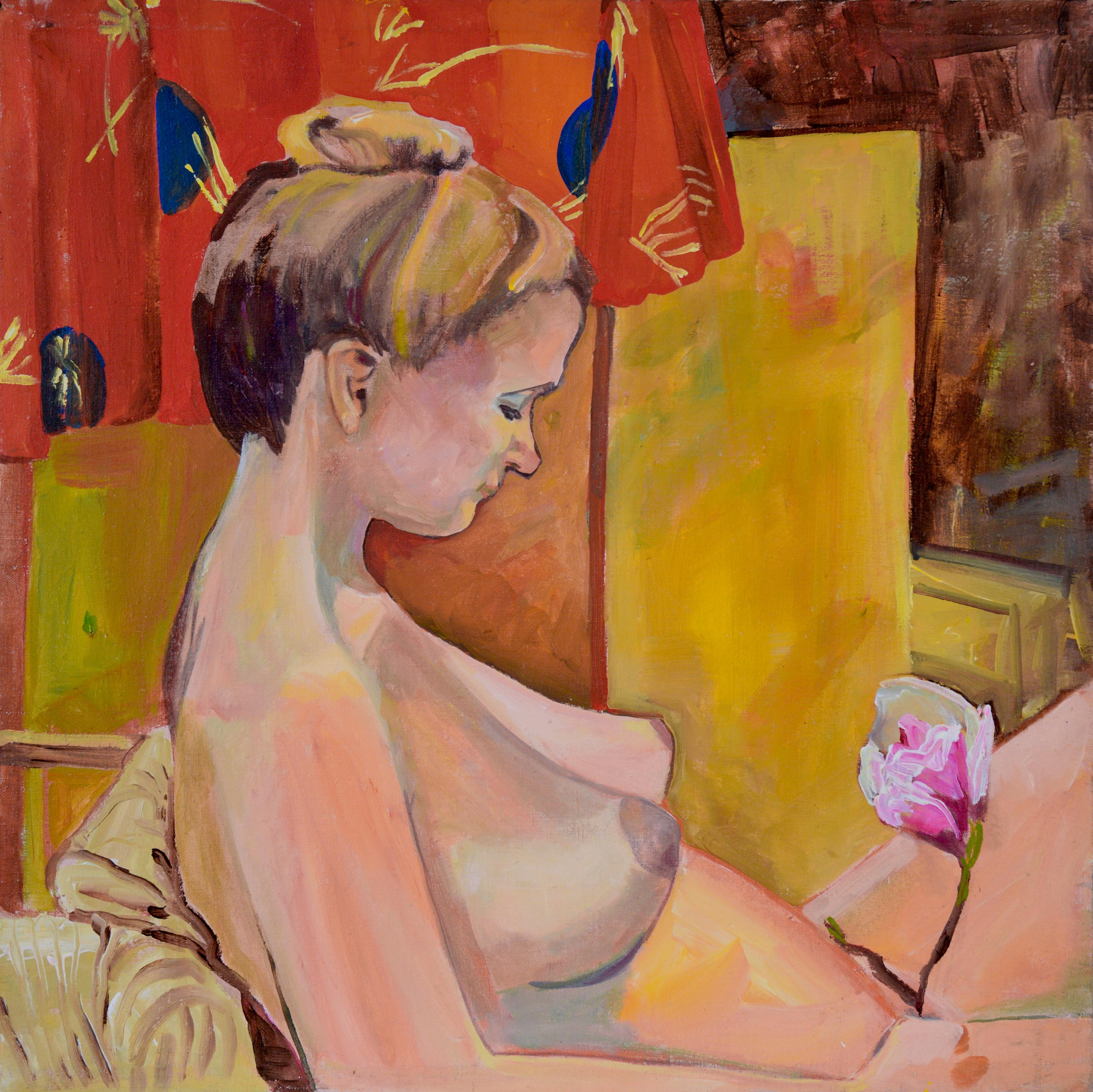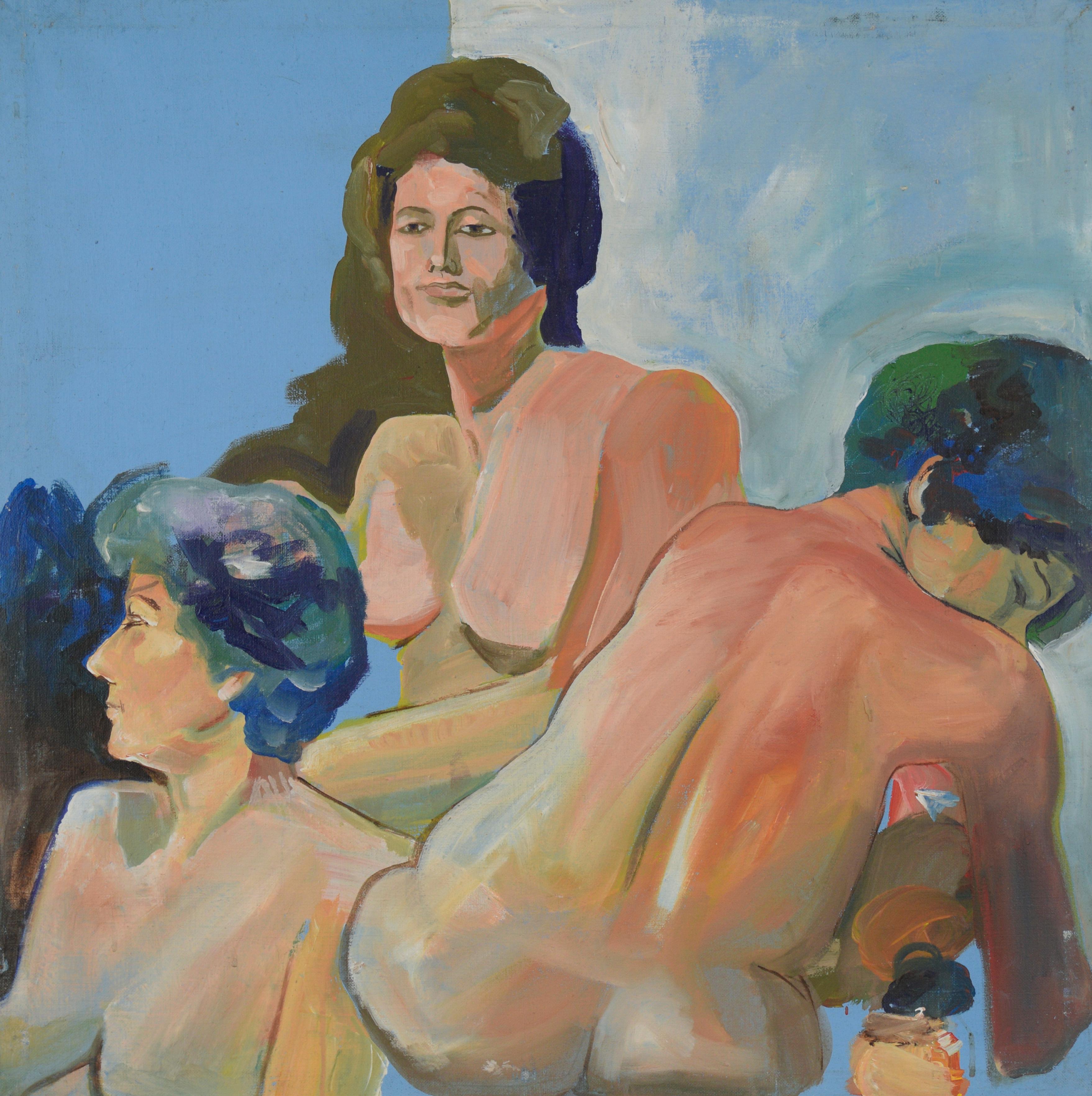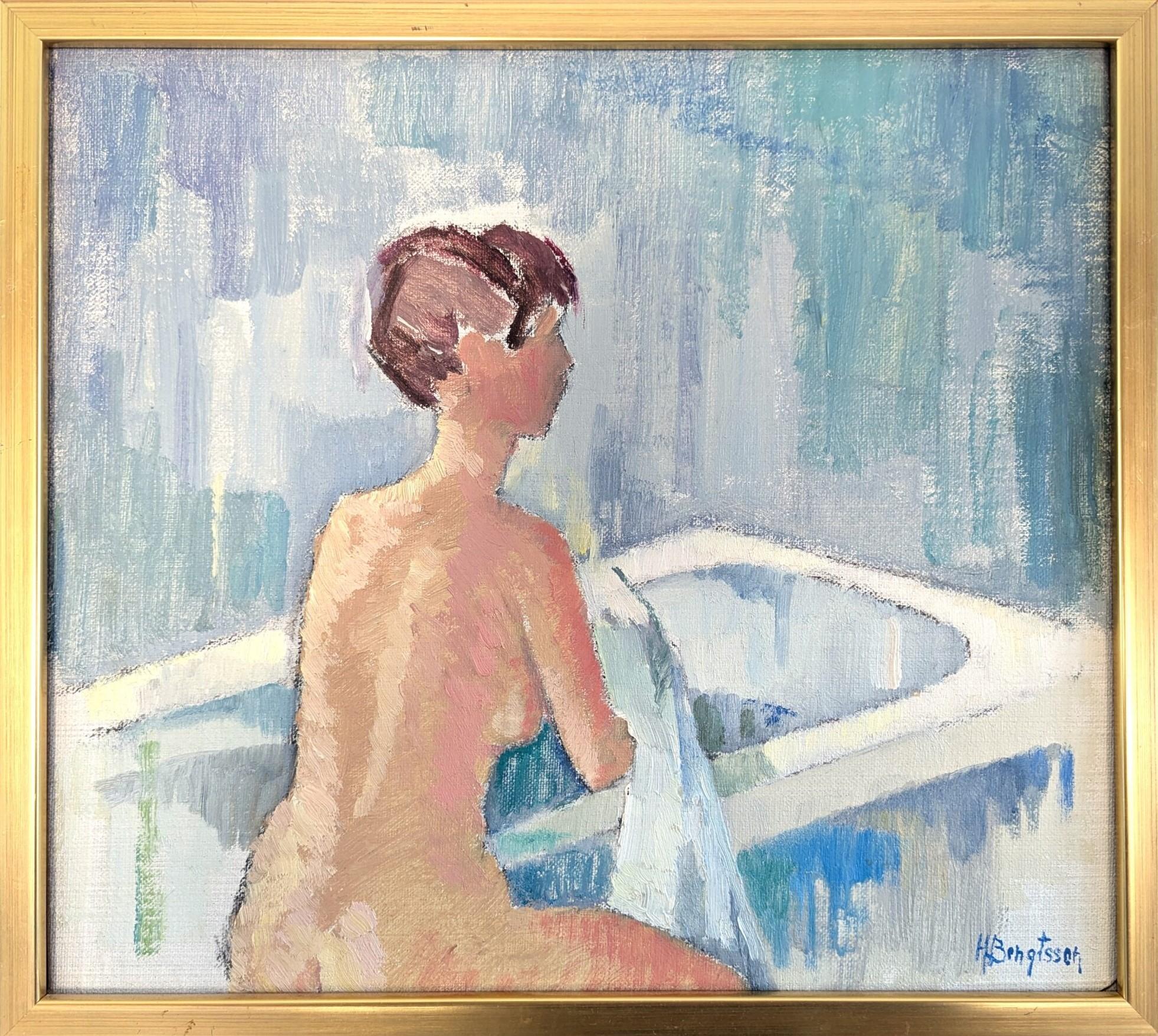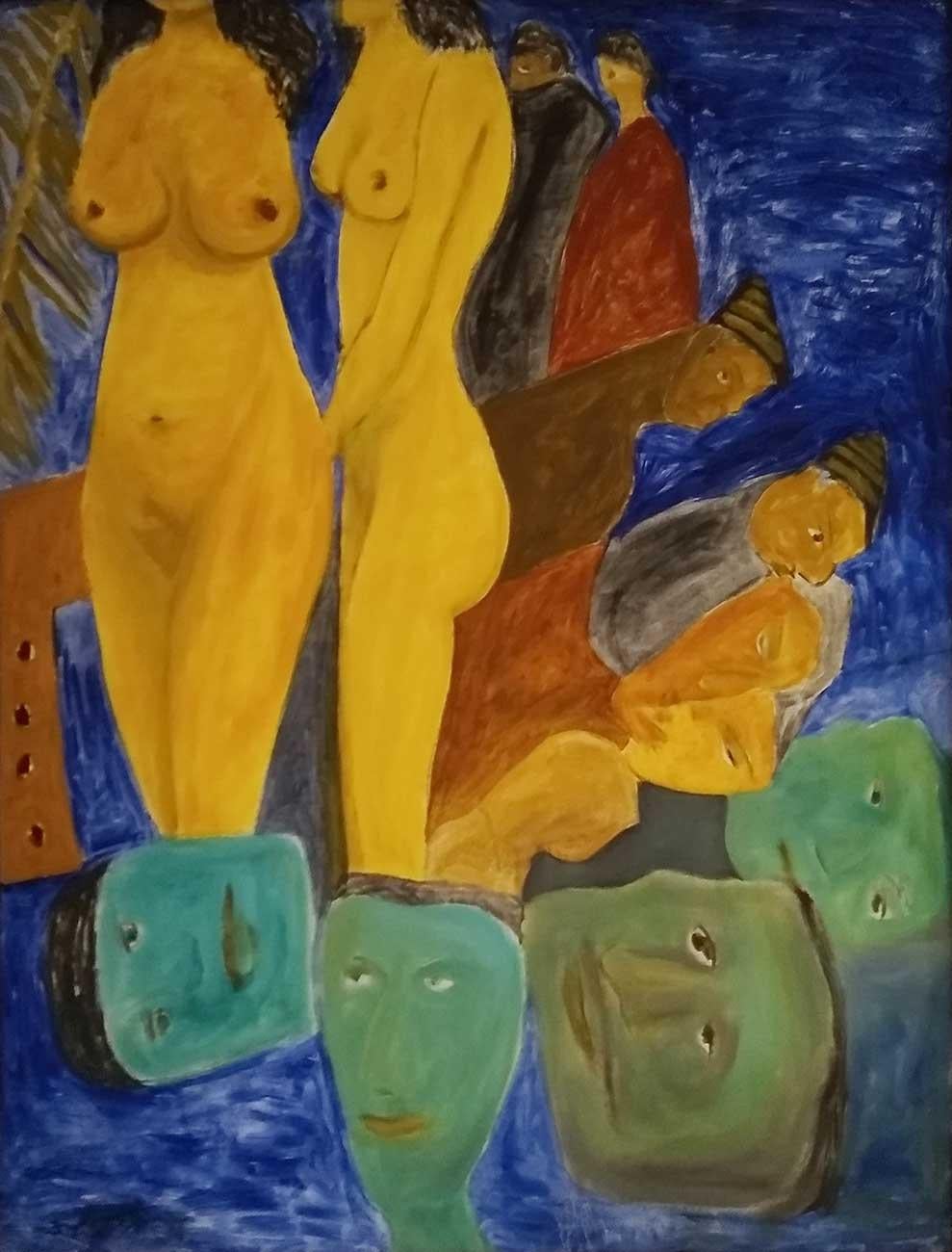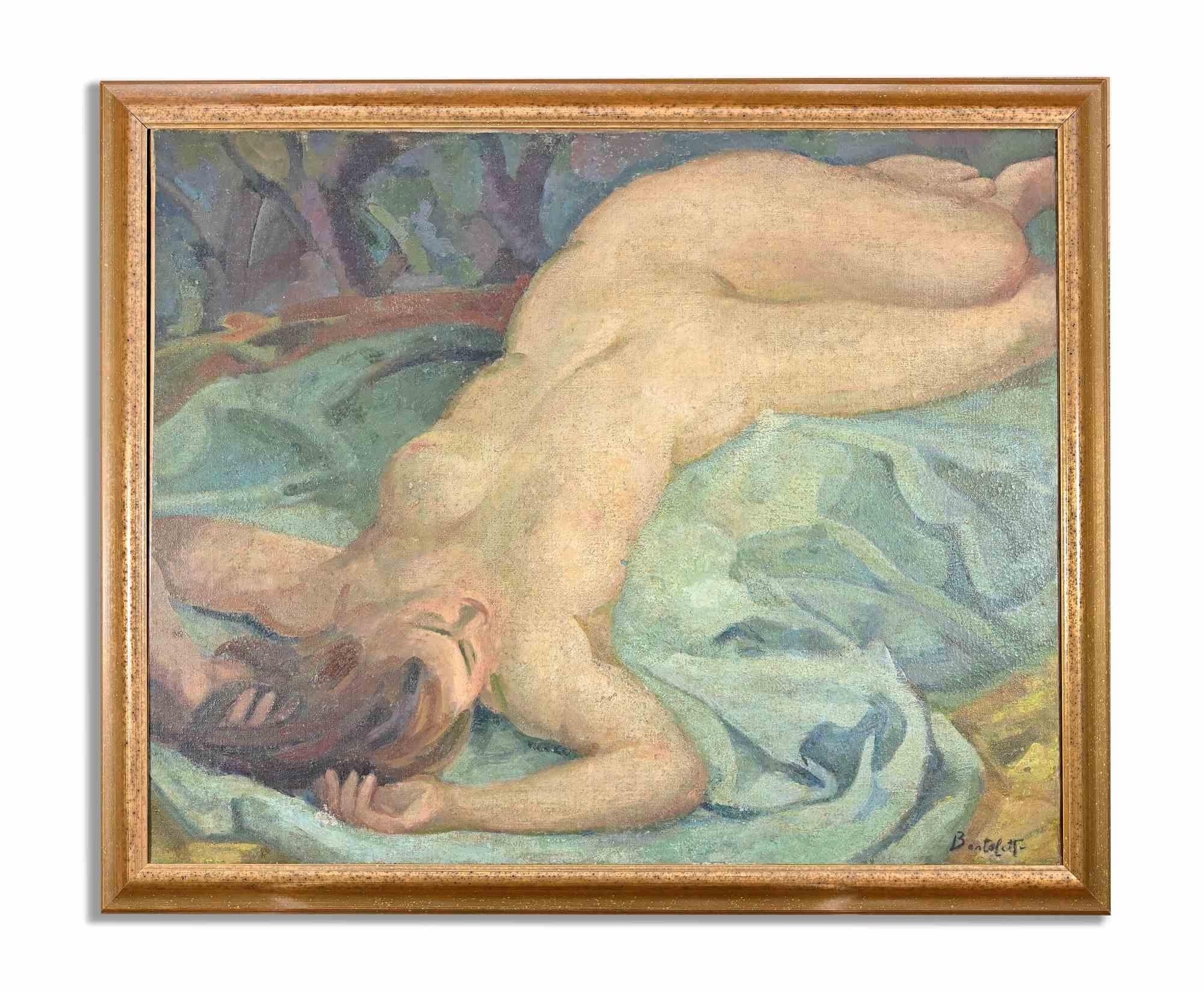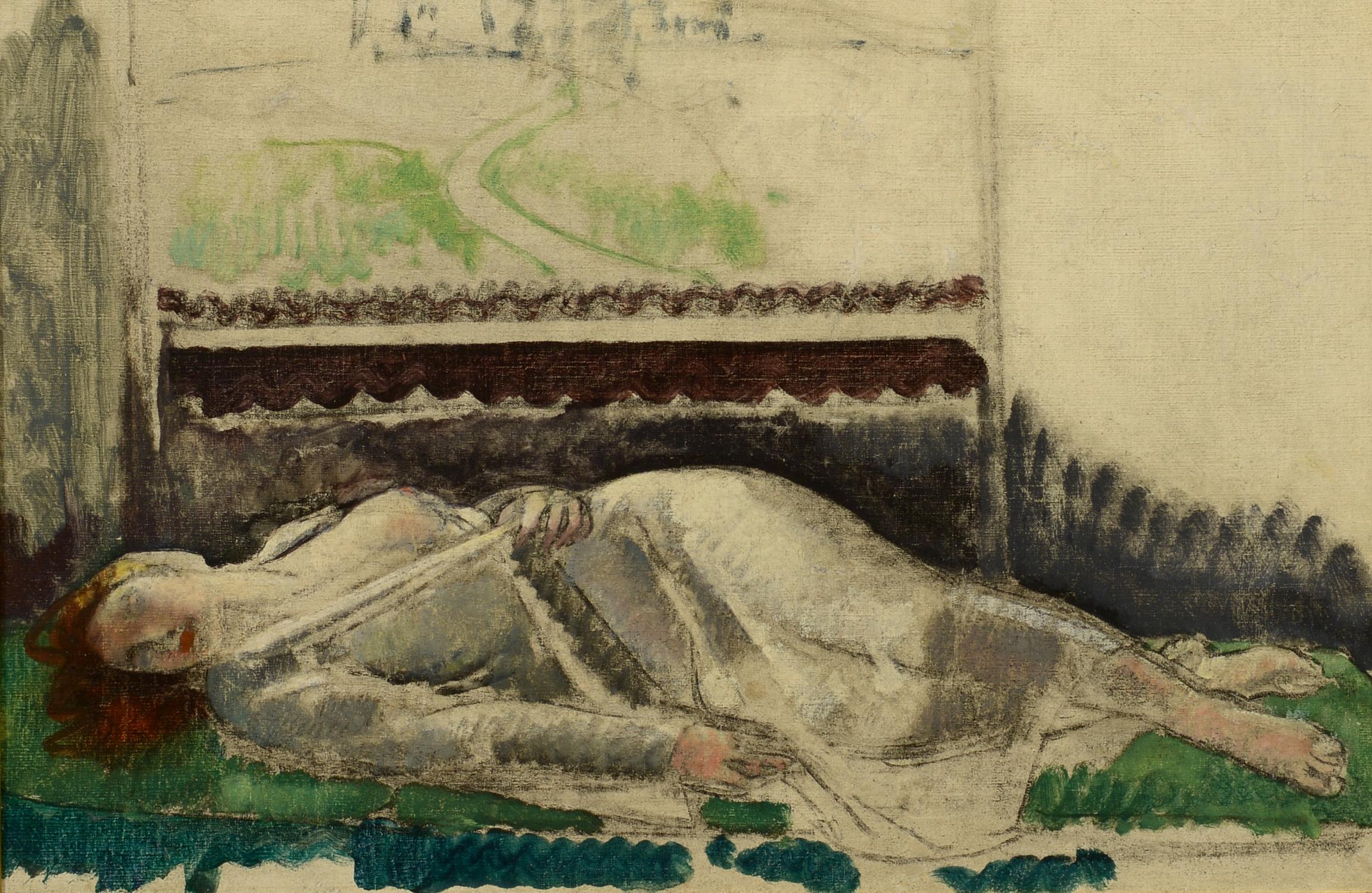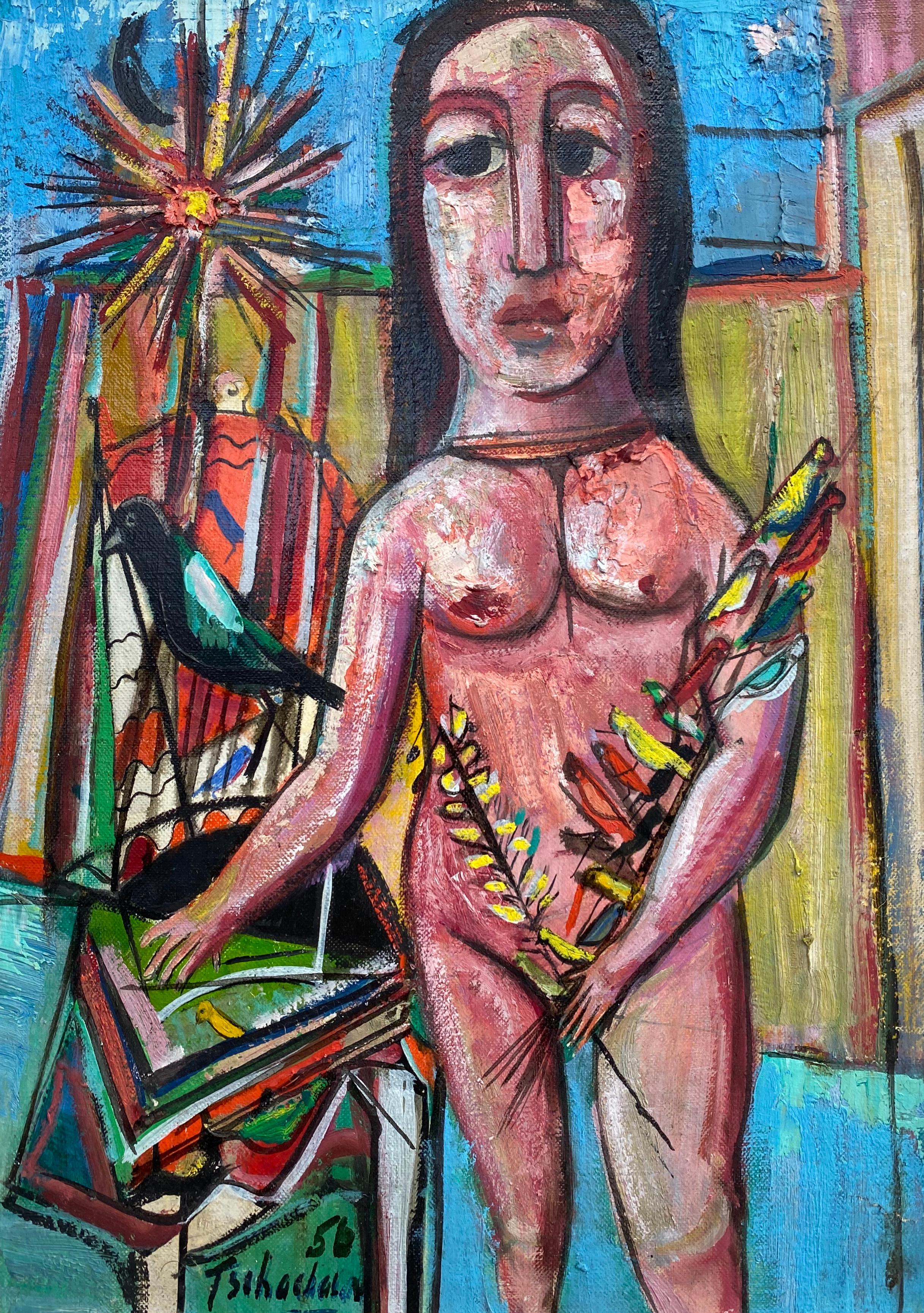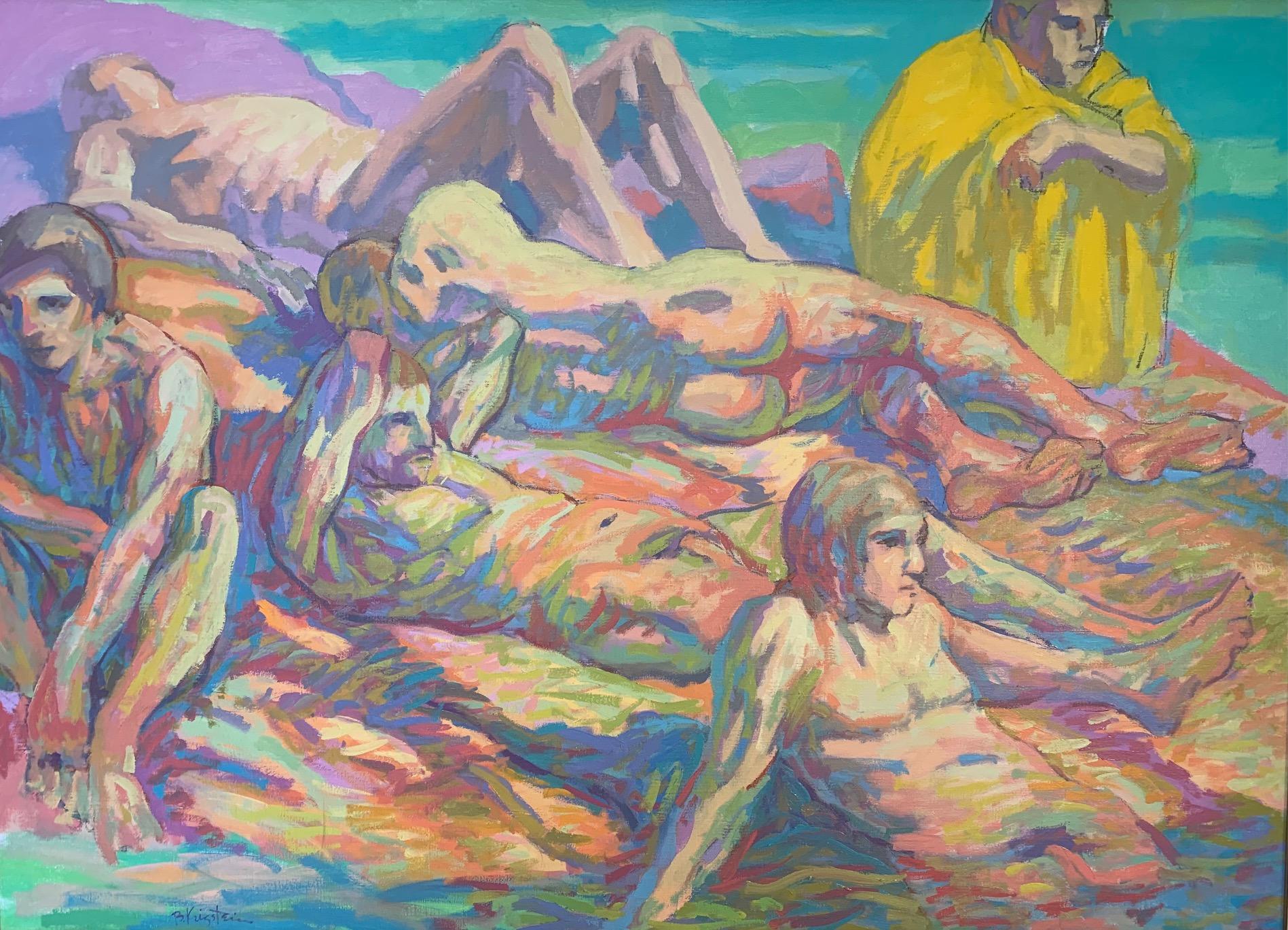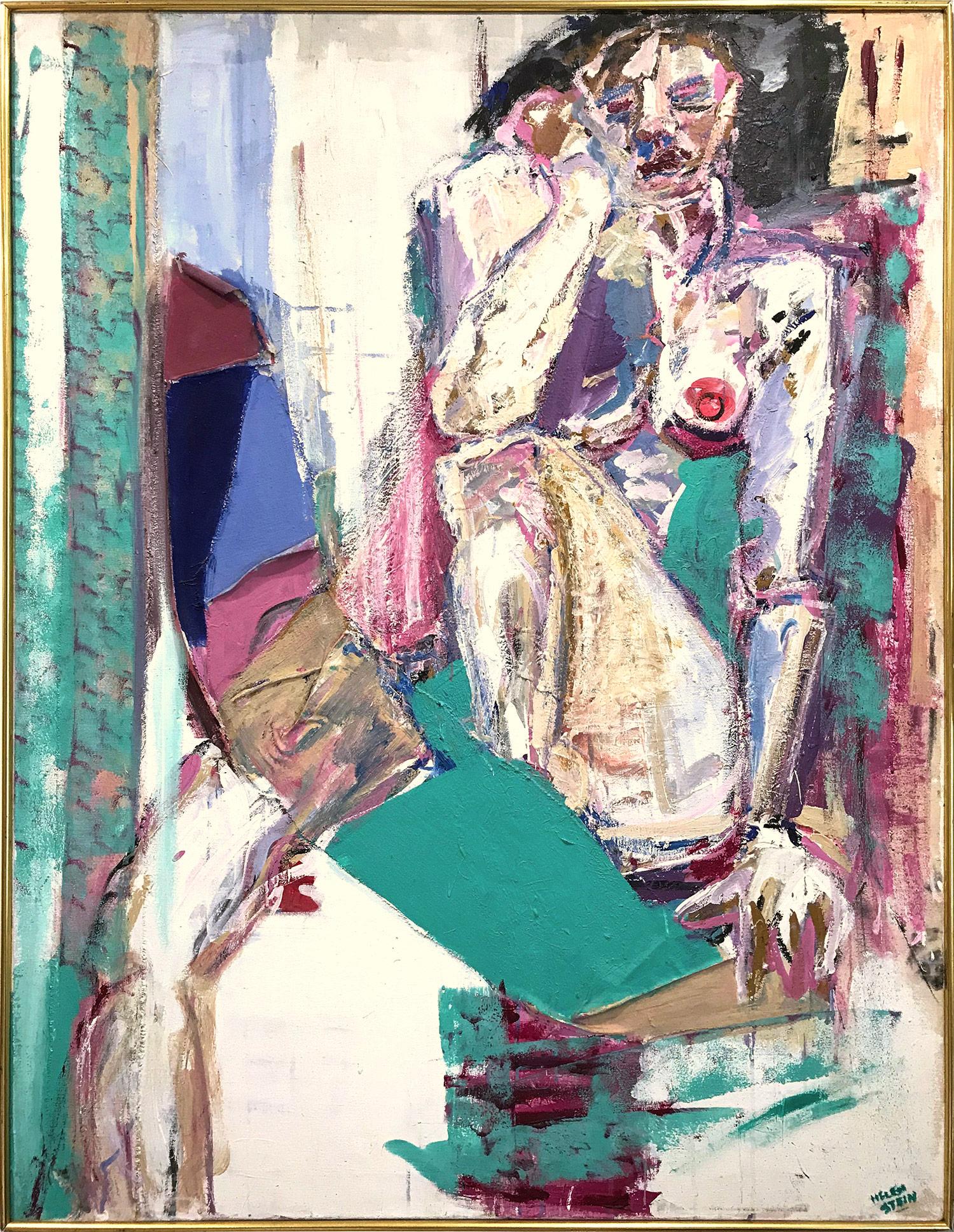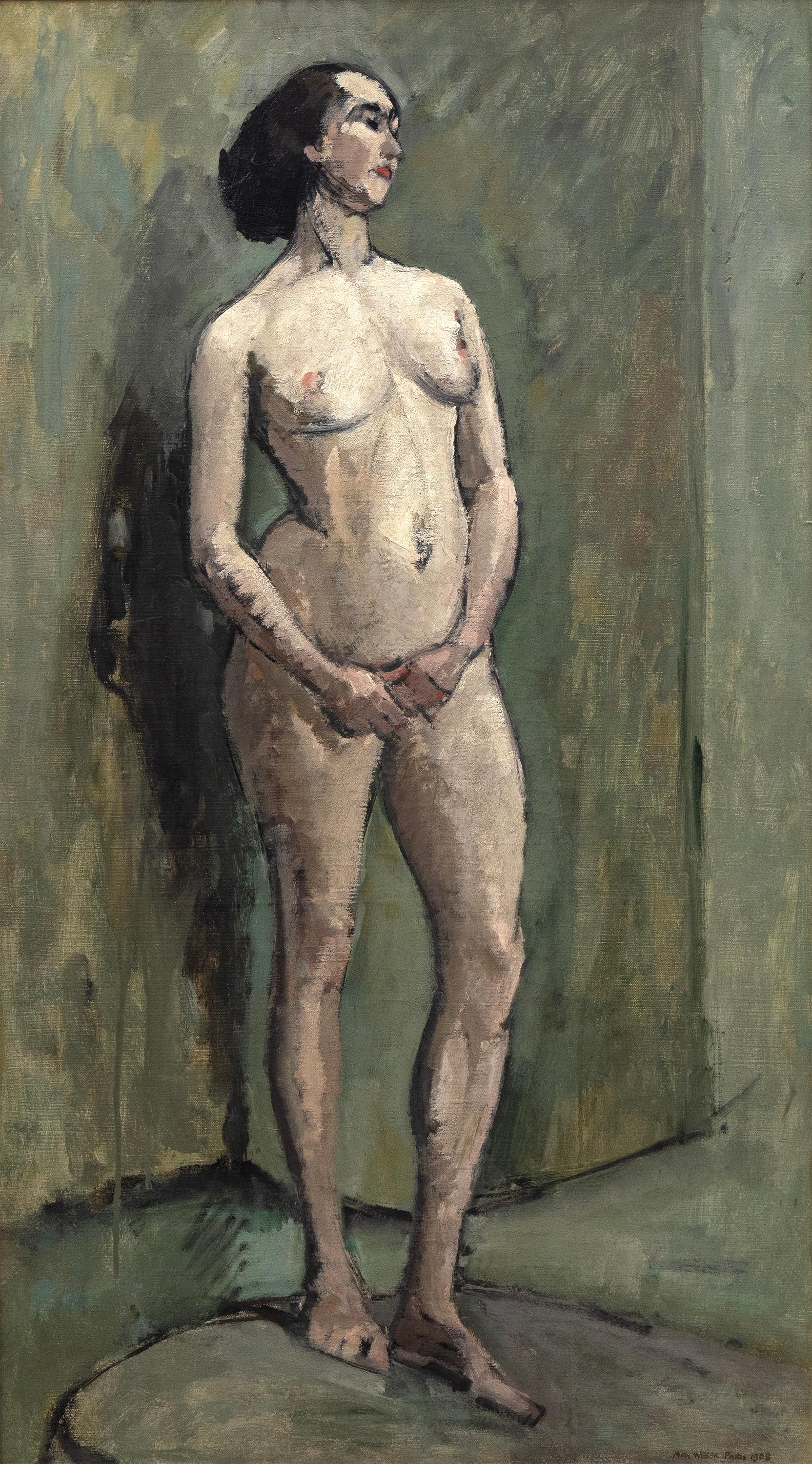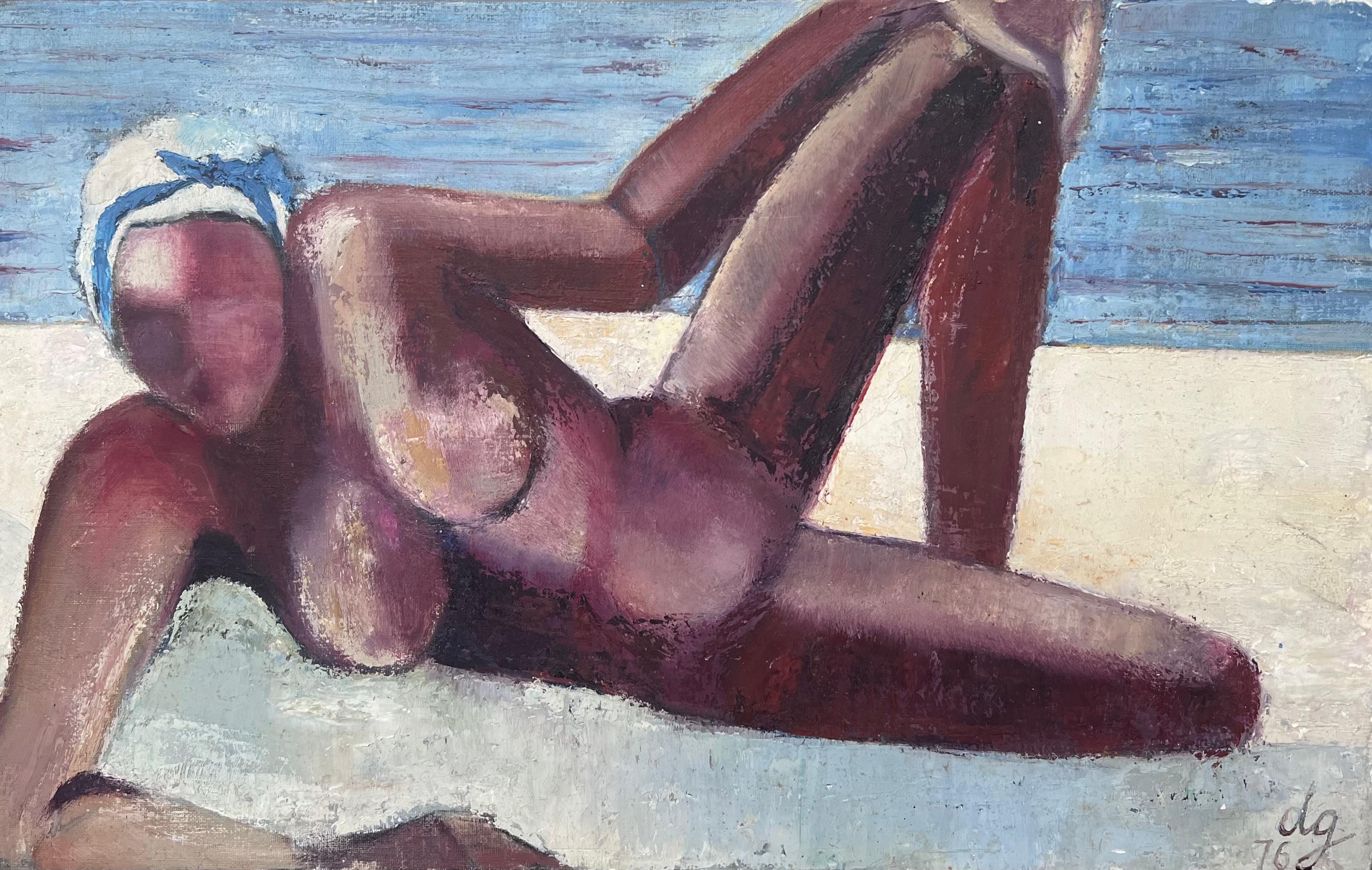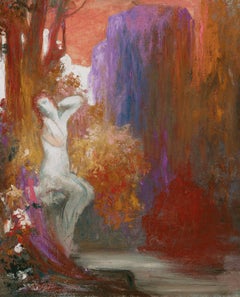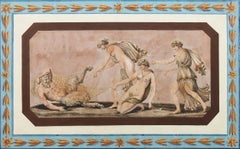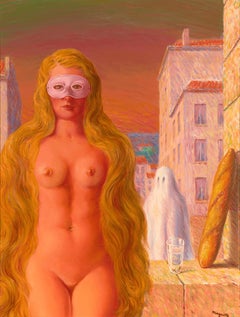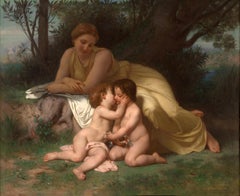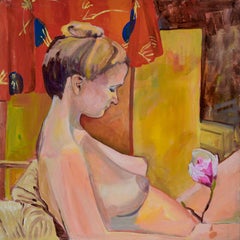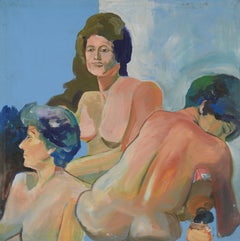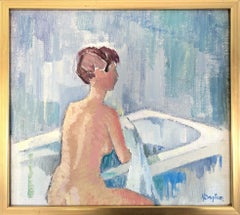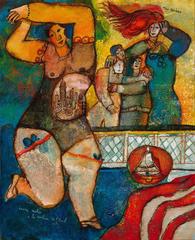
Danse Mêlée à la Couleur de l'Exil
View Similar Items
Want more images or videos?
Request additional images or videos from the seller
1 of 10
Théo TobiasseDanse Mêlée à la Couleur de l'ExilCirca 1984
Circa 1984
About the Item
- Creator:Théo Tobiasse (1927 - 2012, French, Israeli)
- Creation Year:Circa 1984
- Dimensions:Height: 38.75 in (98.43 cm)Width: 31.25 in (79.38 cm)Depth: 0.5 in (1.27 cm)
- Medium:
- Movement & Style:
- Period:
- Condition:
- Gallery Location:New Orleans, LA
- Reference Number:Seller: 30-52551stDibs: LU1861209403
Théo Tobiasse
Born in Palestine in 1927 and brought to Paris as a child, Theo Tobiasse created his earliest drawings before World War II. After the war, having spent the crucial years of his youth hiding from the Nazis in a Paris apartment, he became a successful commercial designer until 1961, when he decided to devote his full attention to painting. Tobiasse's style of painting is highly sophisticated. His technique is a painterly blend of surrealism, expressionism, and modern primitivism. His themes are literary, often biblical, and at times, erotic. His paintings seem to transcend history - fusing dreams, mythologies, biblical stories and his own past - into rich metaphors for the world of the present. An internationally acclaimed artist, Tobiasse's works are included in numerous private, corporate and museum collections worldwide.
About the Seller
5.0
Vetted Professional Seller
Every seller passes strict standards for authenticity and reliability
Established in 1912
1stDibs seller since 2013
16 sales on 1stDibs
Typical response time: 5 hours
Authenticity Guarantee
In the unlikely event there’s an issue with an item’s authenticity, contact us within 1 year for a full refund. DetailsMoney-Back Guarantee
If your item is not as described, is damaged in transit, or does not arrive, contact us within 7 days for a full refund. Details24-Hour Cancellation
You have a 24-hour grace period in which to reconsider your purchase, with no questions asked.Vetted Professional Sellers
Our world-class sellers must adhere to strict standards for service and quality, maintaining the integrity of our listings.Price-Match Guarantee
If you find that a seller listed the same item for a lower price elsewhere, we’ll match it.Trusted Global Delivery
Our best-in-class carrier network provides specialized shipping options worldwide, including custom delivery.More From This Seller
View AllOndine
By Pierre Marcel-Béronneau
Located in New Orleans, LA
Mystical and mysterious, a mythological Ondine rests beside an ethereal forest pond in this majestic, original oil on canvas by French Symbolist Pierre-Amédée Marcel-Béronneau. A stu...
Category
20th Century Symbolist Nude Paintings
Materials
Canvas, Oil
Italian Panel with Satyr and Nymphs
Located in New Orleans, LA
This extraordinary Italian gouache and oil on canvas brings two of the most popular characters from Greek mythology vividly the life - the nymph and the satyr. Both creatures are famed for their carefree natures and lascivious temperaments, and tales abound of satyrs pursing nubile nymphs in order to rape or seduce them, usually with little success. One such narrative humorously unfolds in the present piece, which depicts an indignant satyr captured by three nymphs with a golden net.
The relationship between these two mythological creatures was a popular one for artists throughout the 18th and 19th centuries, though its origins stretch back to antiquity. Both satyrs and nymphs...
Category
Early 19th Century Other Art Style Figurative Paintings
Materials
Canvas, Oil, Gouache
Price Upon Request
Le carnaval du sage by René Magritte
By René Magritte
Located in New Orleans, LA
René Magritte
1898-1967 Belgian
Le carnaval du sage
(The Sage’s Carnival)
Signed “Magritte” (lower right); titled and dated "Le carnaval du sage 1947" (en verso)
Oil on canvas
The enigmatic paintings of René Magritte have become some of the most familiar and celebrated of the Surrealist movement. Among the most influential of the Surrealist painters of the 20th century, Magritte is an artist of international renown, as beloved for his popular appeal as he is for the psychological intensity of his works. The present oil on canvas, entitled Le carnaval du sage, was executed in 1947 at the height of his career, and it is a tour-de-force example of the haunting, mysterious scenes that comprise his oeuvre.
Painted in the years following the Second World War, Le carnaval du sage showcases several recurring themes from Magritte’s oeuvre. Chiefly, a juxtaposition between the visible and the hidden is keenly felt. Throughout his career, Magritte explores the psychological obsession with revealing what is hidden, particularly with regard to the human face. In his Le fils de l’homme, he obscures the face of a man in a bowler hat with an apple, while his Les amants (Metropolitan Museum of Art) conceals the faces of two lovers with white sheets. In Le carnaval du sage, Magritte juxtaposes the blatant nudity of his central figure by masking her face, simultaneously revealing and concealing her from the viewer.
The work also incorporates two of Magritte’s most common tropes – the glass of water and the baguette. Lending the scene a strange sense of domesticity, they appear infinitely familiar and distinctly out of place, and thus heighten the uncanny effect of Magritte’s composition. In the background hovers a ghost obscured by a sheet, a figure which was of particular fascination to Magritte beginning in 1946. He once wrote to his fellow Surrealist Paul Nougé: "I saw in a dream an answer to the problem of the ghost: the traditional ghost draped...
Category
20th Century Post-Impressionist Nude Paintings
Materials
Canvas, Oil
Price Upon Request
Young Mother Contemplating Two Embracing Children by William-Adolphe Bouguereau
By William-Adolphe Bouguereau
Located in New Orleans, LA
William-Adolphe Bouguereau
1825-1905 French
Jeune mère contemplant deux enfants qui s'embrassent
(Young Mother Contemplating Two Embracing Children)
Signed “W-Bouguereau” (bottom ...
Category
19th Century Academic Figurative Paintings
Materials
Canvas, Oil
Après le bain (After the bath)
By Pierre Auguste Renoir
Located in New Orleans, LA
For Pierre-Auguste Renoir, Impressionism's pre-eminent figure painter, depicting the nude was an exercise in bringing the canvas to life. He once said, “I look at a nude, I see myriads of minuscule shades. I have to find those which will make the flesh on my canvas come to life and resonate.” This compelling portrait by Renoir entitled Après le bain presents the nude figure of a woman in a serene, private moment, absorbed in the task of drying herself after a bath. The artist’s mastery of light and shading is incredible, achieving a sense of vitality in this otherwise ordinary scene.
Renoir is celebrated for his figural work, especially his Rubenesque female nudes, however, it was not until the artist was in his forties that he depicted the nude with any frequency. In 1881, Renoir traveled to Italy, where he studied the works of the Renaissance masters and the ancient art of Pompeii and Rome. Upon his return to France, the nude became his favored subject, and he used the motif to combine the spontaneity of Impressionism with the solid modeling of classical painting. Renoir’s medium here, sanguine, a reddish-brown chalk, was used extensively in the Renaissance by Leonardo (who employed it in his sketches for the Last Supper), Michelangelo and Raphael. Its warm hue lends itself well to depicting flesh, and the chalk drawing allows for a greater focus on line, form and texture in a departure from the aspects of color and light that so often preoccupied the Impressionists. Après le bain conveys the impression of arrested motion with perfect naturalness, deftly capturing the moment before the elegant lines of the sitter's form change position.
The sitter is almost certainly Gabrielle Renard, the nanny to Renoir’s children and a frequent model for the artist. Gabrielle was the cousin of Renoir’s wife, Aline, and came to Montmartre to work for the family at the age of 16. She developed a strong bond with the family and became a favorite subject for Renoir, appearing in several of his most important works, including his 1911 Gabrielle with a Rose (Musée d'Orsay). When Renoir began to suffer from severe rheumatoid arthritis that would eventually leave him unable to walk and scarcely able to grasp a paintbrush, it was Gabrielle that would assist the artist by positioning the paintbrush between his crippled fingers.
Born in Limoges, France in 1841, Renoir began his career as an apprentice to a painter of porcelain wares. He later moved to Paris at the age of 21, enrolling at the prestigious École des Beaux-Arts. It was here, while studying under Charles Gleyre, that Renoir attained a tremendous appreciation for the academic style of painting, a quality that would last throughout his career. This was also when he met Claude Monet and several other classmates, with whom he would later form the Impressionists.
Working closely with Monet, Renoir began experimenting with the portrayal of light and its effect on his canvases. The youngest member of the Impressionist movement, an astute Renoir recognized how a subject was constantly changing due to the dynamic effects of light on color. Relying heavily upon his academic training that focused on composition, lines and descriptive details, Renoir distinguished himself among his contemporaries. His intuitive use of color and expansive brushstroke, along with acute attention to his subject, have placed him among the finest painters in history.
This work is accompanied by a certificate of authenticity and will be included in the forthcoming catalogue raisonné of the work of Pierre-Auguste Renoir from the Wildenstein Plattner Institute.
Circa 1898
Canvas: 43 1/2" high x 35 1/2" wide
Frame: 57 3/4" high x 49 1/4" wide
Provenance:
Galerie Durand-Ruel, Paris (acquired from the artist on January 25, 1899)
J. Pereire Collection, France (1966)
Sam Salz, New York (before 1981)
Claus Virch, Paris
French Compagny, Inc., New York
Larry Silverstein, New York (circa January 1987)
Le Clos de Sierne Gallery, Geneva
Galerie Heyram, Paris (October 1987)
Francis Gross
M.S. Rau, New Orleans
Literature:
B. Schneider, Renoir, Berlin, 1957, p. 95 (illustrated in color, p. 83)
M. Gauthier, Renoir, Paris, 1958, p. 83 (illustrated in color; erroneously dated '1916' and titled 'Woman in her toilet')
F. Fosca, Renoir, L'homme et son obra, Paris, 1961, p. 280 (illustrated, p. 95; erroneously dated 'about 1890' and titled 'After the Bath...
Category
19th Century Impressionist Nude Paintings
Materials
Canvas, Paper, Chalk
Price Upon Request
Orientala By Reuven Rubin
By Reuven Rubin
Located in New Orleans, LA
Reuven Rubin
Israeli 1893-1974
Orientala
Signed “Reuven Rubin"
Oil on canvas
A striking and unique work rendered in a breathtaking jewel-toned palette, Orientala by Rueven Rubin ...
Category
20th Century Post-Impressionist Nude Paintings
Materials
Canvas, Oil
You May Also Like
Woman in Bloom - Figurative Nude Study Oil on Canvas
By Patricia Gren Hayes
Located in Soquel, CA
Woman in Bloom - Figurative Nude Study Oil on Canvas
A nude woman, seemingly pregnant, sits reclined in a chair with her hands at the base of her belly holding a flower. This striki...
Category
Mid-20th Century American Modern Figurative Paintings
Materials
Canvas, Oil
Three Poses - Nude Figure Study by Patricia Gren Hayes
By Patricia Gren Hayes
Located in Soquel, CA
Three Poses - Nude Figure Study by Patricia Gren Hayes
Three nude women serving as models in an art class, showing different expressions by American painter, Patricia Gren Hayes (Ca...
Category
1970s American Modern Figurative Paintings
Materials
Canvas, Oil
Mid Century Modern Vintage Nude Figurative Portrait Oil Painting - Bath Time
Located in Bristol, GB
BATH TIME
Size: 35.5 x 40 cm (including frame)
Oil on canvas
A mid-century modernist style figurative painting that depicts a nude female figure by a bathtub, executed in oil onto c...
Category
Mid-20th Century Modern Figurative Paintings
Materials
Oil, Canvas
Women Nude, Heads, Blue Green Ochre, Acrylic Canvas by Indian Master "In Stock"
By Kartick Chandra Pyne
Located in Kolkata, West Bengal
Kartick Chandra Pyne - Untitled - 42 x 36 inches (unframed size)
Acrylic on Canvas
Inclusive of shipment in roll form.
Style of the Artist : After graduating from the Government Col...
Category
Early 2000s Modern Nude Paintings
Materials
Canvas, Acrylic, Oil
Lying Woman - Oil on Canvas by Nino Bertoletti - 1930/40s
By Nino Bertoletti
Located in Roma, IT
Lying Woman is an original modern artwork realized by the artist Nino Bertoletti beetween 1930 and 1940.
Mixed colored oil on canvas.
Hand signed by the artist on the lower margin
Nino Bertoletti (Rome, October 26...
Category
1930s Modern Figurative Paintings
Materials
Canvas, Oil
"By the Window, " Leon Kroll, oil, figurative art, nude, modernism
By Leon Kroll
Located in Wiscasset, ME
Leon Kroll was a painter, lithographer, art critic and teacher who was born in 1884 in New York City. Living his professional life in New York City and Chicago, he summered in Rockpo...
Category
20th Century Modern Figurative Paintings
Materials
Canvas, Oil
Recently Viewed
View AllRead More
Paul Revere Crafted This Silver Coffee Pot 250 Years Ago
Perhaps best known as a Revolutionary War hero, Revere was also an accomplished silversmith, and this pot is now available on 1stDibs.
Degas Portrayed These Exuberant Ukrainian Dancers with ‘Orgies of Color’
Discovered in Parisian cabarets, the performers reenergized the artist’s practice.
More Ways To Browse
Stanley Spencer Nude Paintings
William Crosbie
Leon Collard
Marcel Rene Herrfeldt
Charlotte Corday
Laurent De La Hyre
Margaret Wherry Ziegler On Sale
Picasso David Bathsheba
Toulouse Lautrec Ambassador
Balbyshev Oleksandr
Gerald Leake
Hans Voigt Steffensen
Mattei Nude
Shana Wilson Female Nudes Paintings
Sierk Schroder
Tancrede Synave
Victor Regnart
Voigt Steffensen
